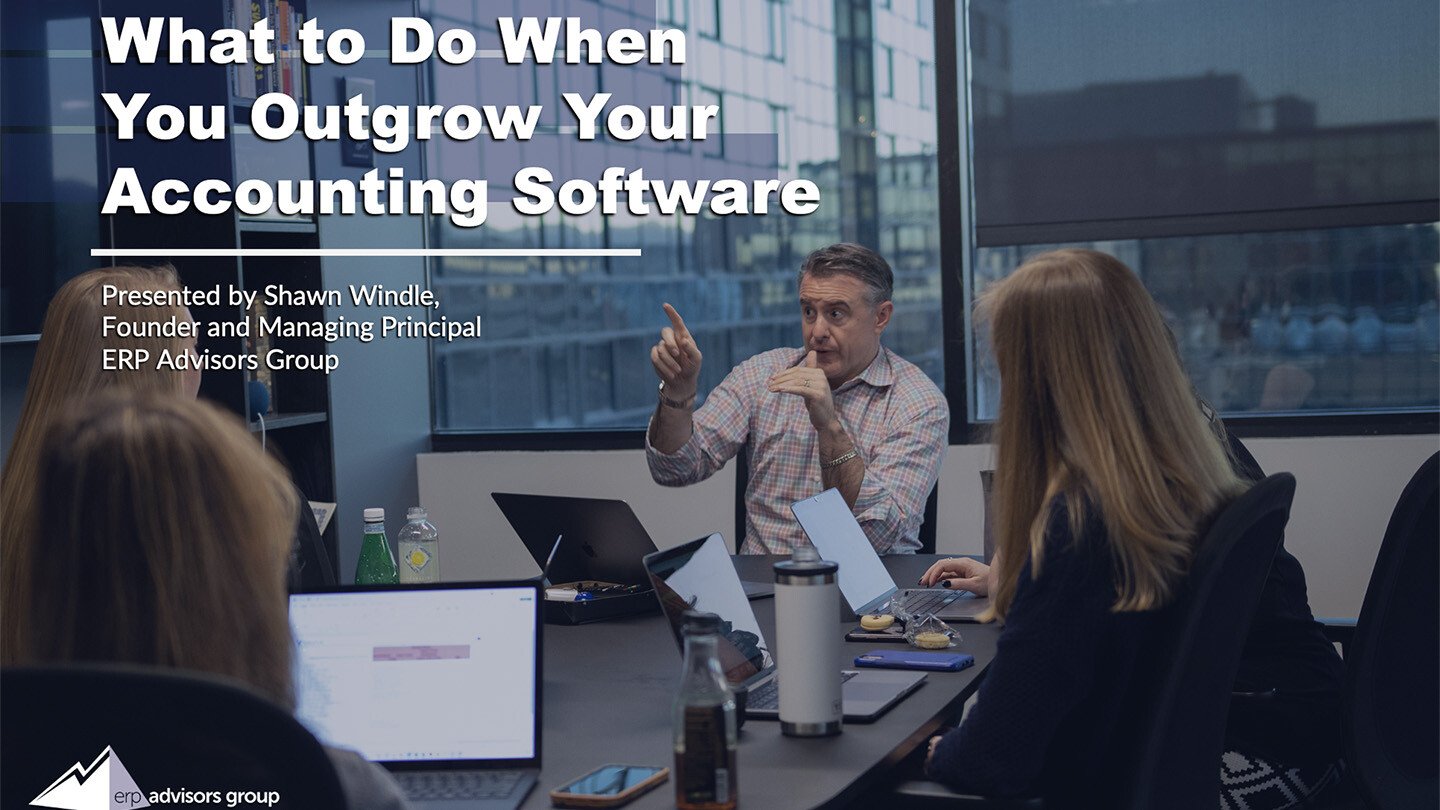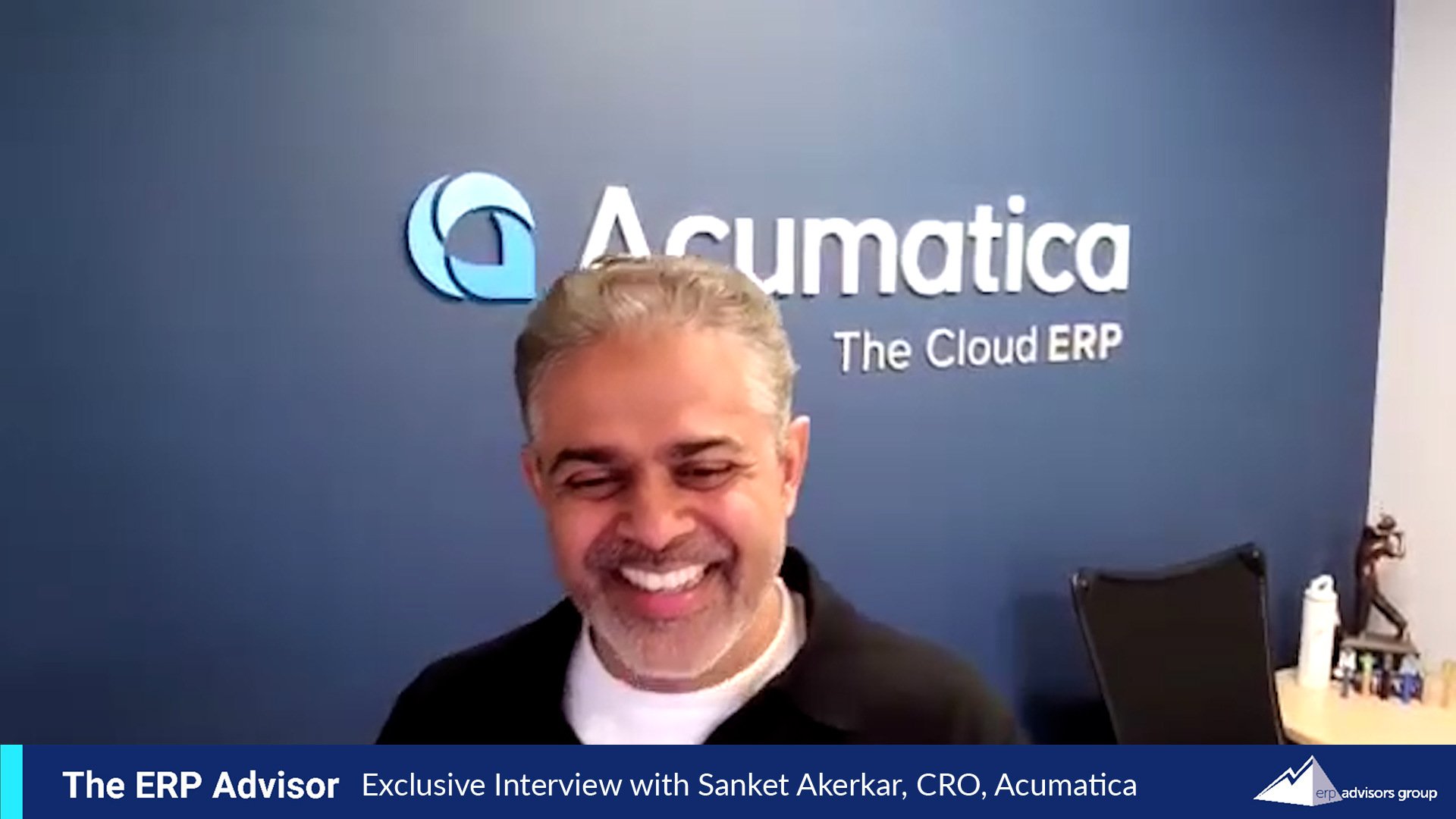
As ERP technology continues its rapid advancement, businesses running on legacy ERP systems find themselves overwhelmed by the lingering need to address the elephant in the room: is it time for an upgrade? The conversation can be daunting with concerns surrounding potential workforce response to the disruption and fear that a change would render the current system’s specialized functionality useless. But in the digital age, companies not rising to the occasion risk becoming obsolete as a result of being unable to retain or attract top talent. In this episode of The ERP Advisor, we will confront the benefits and pitfalls of replacing legacy ERP systems.
What is Legacy Software and When Should You Upgrade
At its core, Legacy ERP software refers to an ERP package whose future viability is in question. Legacy systems can encompass any technology, application, or system that is outdated or is being sunsetted by the vendor.
Legacy ERP systems are the innovative solutions of the past that are no longer enhanced, resulting in a solution that is becoming obsolete. These systems end up getting left behind for a number of reasons, including over-customization, an outdated product, an unsupported system, or incompatibility with servers, operating systems, third-party software bolt-ons, or integration technologies.
What Impact does Legacy ERP have on Businesses?
Legacy ERP significantly impacts a business's ability to operate and grow. Operations can be bogged down by the system, thus harming the company's overall viability, and leaving them vulnerable to disaster. As a result, businesses must confront the system before problems become too large to manage, working through the “what-ifs” before they happen.
At a high level, legacy systems are not well supported since vendor resources have been pulled away from the advancement of those platforms.
An on-premises legacy system puts the entire business at risk, especially from a cybersecurity point of view. Most companies do not employ enough sophistication in their overall IT strategy to ensure all points of threat to their on-premises servers and software are fully protected from hackers and ransomware. These systems are not built to incorporate newer technology such as EDI or best-of-breed solutions for automating processes. Therefore, the system only continues to fall behind. A business's place in the market can also be put in jeopardy due to slow processing times harming the business's ability to operate.
Besides the technology lag, a business can face an unexpected and inconvenient failure of its system. Aging technology may hit a point where it breaks down, potentially beyond repair, and ERP systems are no different. Disaster recovery backups may not be enough to mitigate a crashed system that cannot be repaired. Enhancements to legacy systems peter out over time, so replacing a crashed system with the same product may not be an option. If an ERP is no longer functional, the business will need to start over with a new system by upgrading to a new product from its current vendor or choosing and implementing an entirely new product. In this worst-case scenario, a business could be forced to shut down with no way to continue operations.
Another unsuspecting risk to running the entire business on legacy technology is fraud exposure. When only IT and developers can access the underlying data, the numbers can be manipulated on the backend, and Finance and Accounting have no way to attest to the accuracy of the financials. This can be tolerated in a smaller, less sophisticated business environment. But if a company is public or has a fiduciary duty to the company’s owners, including employee owners (an ESOP), management should seriously consider how the legacy software exposes all owners to losses well beyond the cost of a new ERP.
Obstacles to Upgrading Legacy ERP
While an upgrade may be essential, it is not without its challenges. Obstacles can stand in the way of a business’s ability to upgrade, so understanding these challenges is the first step in protecting your business.
A common barrier businesses confront is the over-customization of their legacy ERP system. While out-of-the-box functionality can often meet the needs of a business, others opt to customize the product to fit niche sections of their operations. In the short term, the extreme customization of an ERP system can be beneficial to an organization automating its processes, but this can bar the road to future upgrades. Customization can limit the product's future, forcing the organization to skip necessary upgrades over the life of its product. Once a product misses an upgrade, it becomes stagnant in its available functionality. This eventually renders the product obsolete because the vendor eventually stops supporting older versions.
Some organizations are forced into a corner by their legacy ERP when the vendor announces that the product is at its end of life. At this point, a system is given a hard deadline for the end of support, which means businesses will no longer be able to receive upgrades and services from the vendor. An inability to get yearly patches and minor fixes can result in the loss of basic accounting fixes for taxes and regulatory forms.
Businesses also struggle with a legacy system in the modern era when it can no longer integrate with other technology. If a company wants to integrate EDI, eCommerce, WMS, CPQ, or more, it will not be able to because the system is too outdated for modern add-ons. This is yet another reason a business’s system can hinder its ability to grow and operate.
Finally, companies actively seeking acquisitions frequently find their legacy technology issues multiply when they acquire new businesses that cannot migrate into their legacy software.
Managing the People Aspect of Upgrading from Legacy ERP
Human capital can be an organization's greatest asset, so managing employee expectations and fears when confronting an ERP software upgrade is vital to the business’s future success. Undergoing such a drastic organizational change can put a lot of stress on employees.
Before the project even begins, leaders may be met with pushback from employees who do not see the need for a new system. Employee buy-in to an ERP project has the potential to make or break it because the employees will be the ones truly learning about and utilizing the product every day. Key users who feel left out of the decision process may rebel against the success of the project and may cause severe friction if leaders fail to get their support early on. Part of earning buy-in from employees is allowing them to feel heard, while also convincing them of the need through careful research and consideration. Even just allowing key users to sit in on demonstrations can make a big difference in encouraging employees through an ERP upgrade.
A different risk arises when including too many staff because some may insist on “essential” customizations that mirror their current custom user experience. Too many customizations can completely derail an ERP software implementation. Project leaders should manage employee expectations about the functionality that they will have when they go live. If the project leaders leverage the new product’s best practices, they can ensure the company goes live with a minimum viable product and users can start adopting the system. When end users are allowed to demand too many customizations, the budget will undoubtedly go up, the go-live will be delayed, and the system’s performance and future structural integrity can be compromised.
Leaders may be concerned that some staff will be incapable of adapting to a new application because their workforce is not sophisticated enough. These concerns can be managed by developing buy-in early on, adopting a detailed plan for educating the workforce during the training phase of the implementation, and closely supporting them after going live with new software. This planning can help mitigate issues associated with perceived staff shortcomings. However, it is imperative that leaders actually follow the plan set forth for the project and ensure that employees complete the training given to them during implementation. If users fail to train, go-live cutover becomes the training session, which may lead to a failure to adopt and use the system.
There is fear surrounding job security at the heart of any ERP implementation. Employees will worry that the introduction of greater process automation will render their positions obsolete. Leaders must reassure employees that the new ERP will make their job easier, not eliminate the need for them to do their job. ERPs rarely force people out of their positions and contrarily free those employees from manual work to complete more value-added tasks. Even the technical resources who formerly supported the newly replaced technology will continue to be valuable post-go-live, often becoming champions of the new system, or conversely, finally able to retire!
Conclusion
Legacy systems still play their part in running millions of businesses around the world. As technology advances rapidly, more companies are including an ERP replacement as part of their near-term technology strategy. This enables them to remain competitive with customers and retain new talent while becoming compliant and safe with improved disaster recovery, fraud protection, and ERP cybersecurity protocols.





